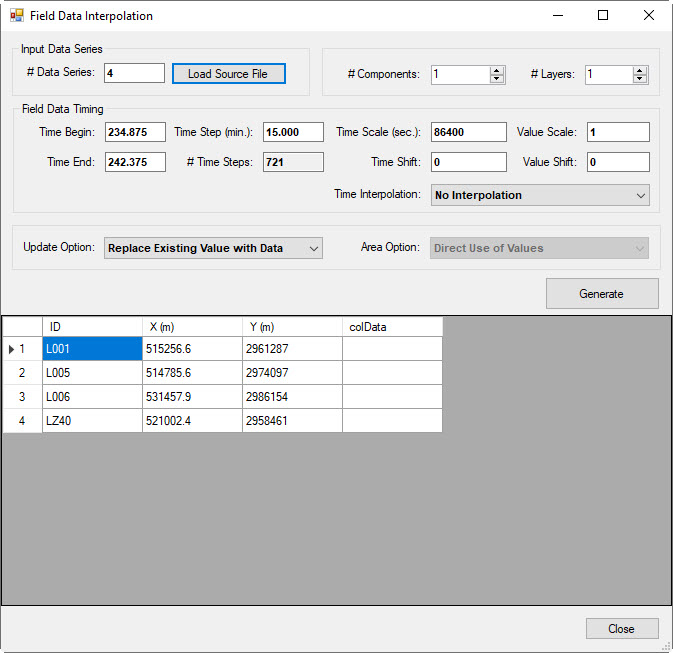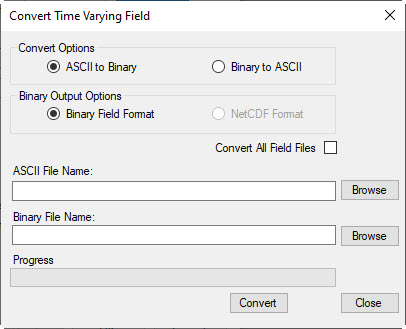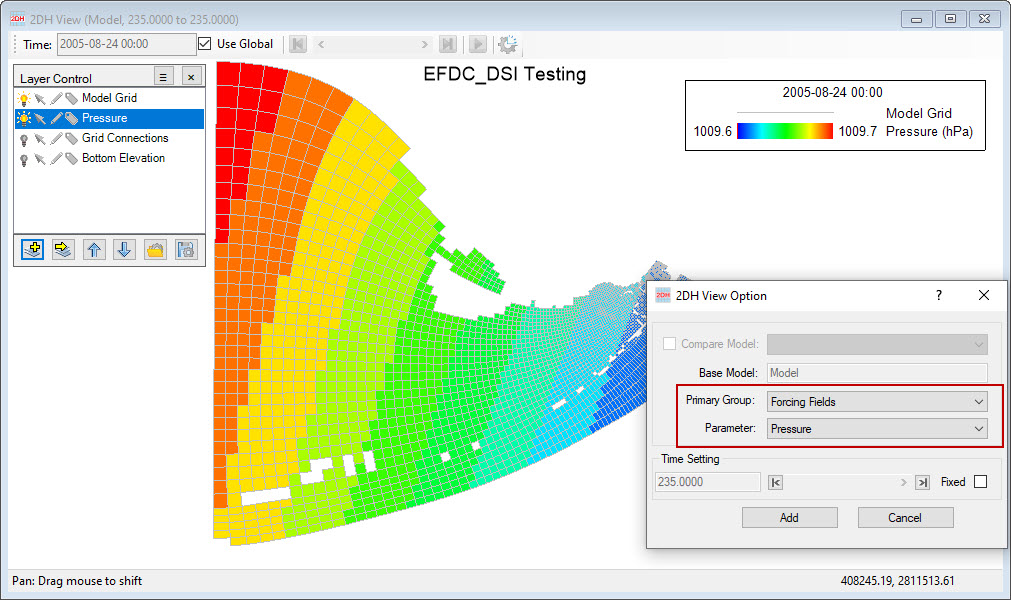The Time Variable Data Field is a new option available in EE 10. This option allows users to specify the time or spatially varying forcings for each cell over the whole model domain. This option uses the Time Varying Field (TVF) data format designed to bridge EFDC+ and other data facilities or numerical models. By using this data format, EFDC+ can receive time varying forcings within its computational domain from external sources. The data format for a TVF file includes ASCII and binary formats described in Appendix B-26. Although the pre- and post-processing of EFDC_+ Explorer 10 can be able to read, write, and view TVF data but at this stage, the creation of TVF data should be done externally.
Temporally and spatially varying forcings can be useful in many applications, such as outlined below:
...
To illustrate this approach, an example simulated the pressure changes caused by a given hurricane. Storm simulation models can export this data at high resolution and can then be imported for use in EE. Right mouse click to Pressure under External Forcing Data tab, Time Varying Fields sub-tab and then the Time Variable Data Field: Air Pressure will be displayed. If the Data Option menu is set to Not Used for pressure, then the pressure field from the external forcing for atmospheric data series will be applied. (Figure 1).
| Anchor | ||||
|---|---|---|---|---|
|
...
Figure 1. Time Variable Data Field form.
To create the PRESFLD file, from Time Variable Data Field form, users should click on Generate button to open Field Data Interpolation form and link all individual data series. Users may also create a list in a text or Excel file includes 4 columns are stations ID; X coordinates in UTM, Y coordinate in UTM; and the path of the data series respectively and then open this text file as shown in Figure 2 below. It is advised to ensure that individual data series files are in the format: the number of records, series name, time and value (see Appendix B-26 for an example). Users may also select whether to apply linear interpolation and whether or not to replace existing data with new data from the drop-down menus. Once these linkages are developed select Generate button.
Anchor Figure 2 Figure 2
Figure 2. Field Data Interpolation form.
Additionally, EE 10 also allows users to load the data files in ASCII or binary format. When the time varying field data is large, users also have an option to convert data from ASCII format to binary format by using Convert Time Varying Fields under Tools tab from the main form toolbar (Figure 3).
Anchor Figure 3 Figure 3
Figure 3. Convert Time Variable Data Field from ASCII to binary.
Once the field is generated, EFDC will use this field in place of the other forcings defined by the user to simulate. Users may review the forcing fields in 2DH View by selecting Forcing Fields from the 2DH View Option as shown in Figure 4.
Anchor Figure 4 Figure 4
Figure 4. 2DH View Option form.
...


